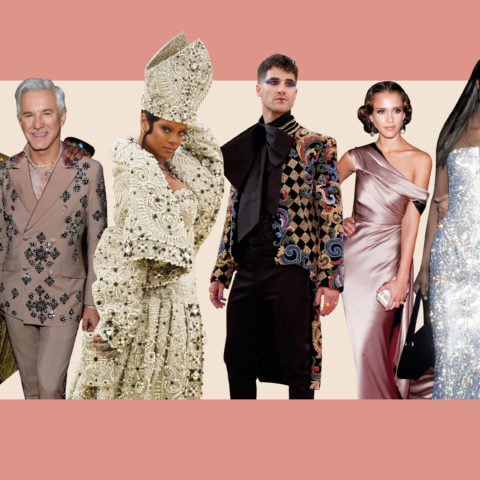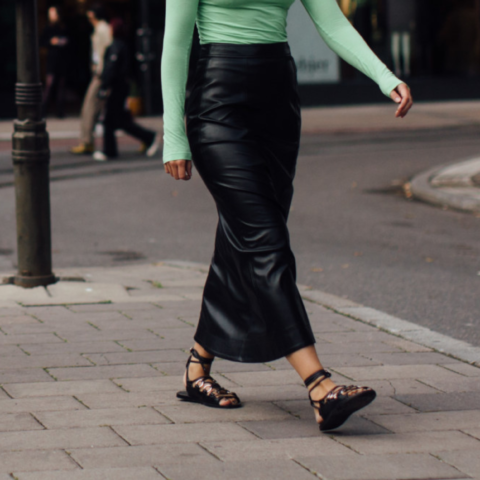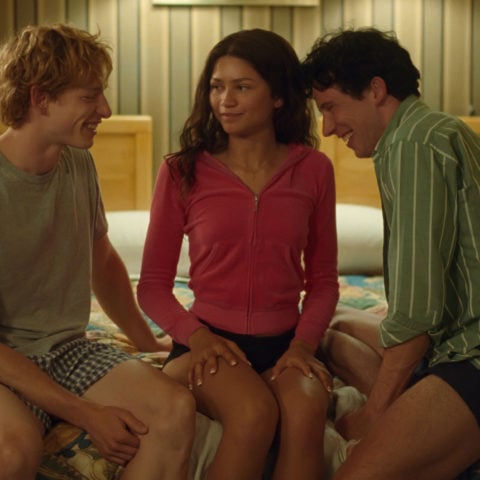What Does Raf Simons’ Departure From Calvin Klein Mean for the Rest of the Industry?
In the 2006 movie The Devil Wears Prada, a helmet-haired Meryl Streep as chilly fashion editor Miranda Priestly castigates a junior employee for failing to recognize the difference between two similar teal belts. In an excoriating monologue, she traces the colour of the employee’s “lumpy blue sweater” back to a 2002 Oscar de la Renta collection, whose outsize influence eventually trickled down to the department store bargain bin where she picked up the sweater. In less than two minutes, Priestly singlehandedly eviscerates her junior’s contempt for subtleties of fashion while serving up the ultimate rebuke to anyone watching who carries the mistaken perception that fashion has nothing to do with them.
*
At 7pm on the Friday evening in December that most deskbound hive workers have already begun to head home for the holidays, Calvin Klein quietly announced they were severing ties with creative director Raf Simons. The Belgian designer had previously held posts at Jil Sander and Dior before taking up at Calvin Klein in 2016. The company stated simply they had “decided on a new brand direction different from Simons’ creative vision.”
The timing of the announcement was meant to be nimble, and bury the fact that one of the most prominent and beloved creative directors working today in fashion was being casually deposed in a similar manner to some cruel dictator of a military state. Included in the announcement was the grave news that Calvin Klein would not mount a collection at New York Fashion Week in September.
After learning of Raf’s departure, it struck me that Miranda Priestley’s total explanation of the fashion industry in one ten-second sound bite no longer rings true. Since Raf’s arrival, Calvin Klein was one of the most hotly-anticipated and more importantly, original shows of fashion week. He had the prescient ability to spearhead the process evinced in Priestly’s monologue; to pluck ideas out of thin air and spin them like spider silk into concrete beauty that would no doubt be widely copied by lower-end brands scrambling to cash in on just a sliver of his magic. He showed hazmat suits atop a runway littered with popcorn. He paid tribute to Jaws in a menacing surf-inspired collection that felt suffused with danger. For his efforts, he was awarded three CFDA awards in two years.
*
There had been rumours of a rift dating back to November, after Emanuel Chirico, the chief executive of PVH which owns Calvin Klein, called Simons’ work a “fashion miss” and suggested the creative director was to blame for a decline in sales. No doubt the brand was spending a lot to produce their creative director’s runway spectacles, but Raf Simons is someone with ideas, and ideas are expensive.
The end of Simons’ tenure demonstrates that originality for its own sake is no longer valued in this business. Gone are the days of volatile geniuses like Alexander McQueen, whose ability to design clothes was informed by his artistic sensibilities mattered more than an investors report.
In cultural economics there’s concept called ‘marginal differentiation,’ which fashion economist Alice Janssens explains as a company releasing a new product for sales that differs only slightly from what was previously available. They change some things to keep the object fresh and new and desirable, but not so much as to be alarming. (Think Margiela releasing new iterations of the tabi boot each season.) Marginal differentiation is the economics equivalent of playing it safe and removes the incentive for bold departures from the norm.
To wit, at the last NYFW I witnessed: tailored separates, off-the-shoulder striped tops, loose-fitting pajama pants, block-heeled shoes, camel trench coats, bomber jackets, and matching suit sets. If fashion collections are meant to be designed for a season ahead, it means they are for the future, thus nothing should be too familiar. Instead, most of what I witnessed was warmed-over versions of clothing I could have purchased at Zara within the last year and a half, had I the desire to.
Simons was a brilliant designer, which begs the question, what went wrong? The answer, unfortunately, is nothing. If two parties with opposing values attempt to reconcile, the middle ground will never be satisfactory to either party. By and large, it appears that, “we know too much about buying habits and likes, and the result is an insidious bias toward giving people what they have already indicated they want,” Vanessa Friedman writes in the New York Times.
Something about Raf’s departure makes me unbearably emotional. Watching someone who is good at their job get fired is sickening to watch and somehow puts the rest of the world unstable, off balance. Because if they are let go, what hope do the rest of us have?
“Turning around a company the size of Calvin takes a certain type of creative person, a significant amount of time, and an enormous amount of money. Calvin wasn’t built in a day or 18 months,” Robert Burke of the luxury consultancy Robert Burke Associates told the New York Times. “Having an impact on a brand the size of Calvin is a very delicate and complex challenge. It seems that this task was more than either party expected. ”








